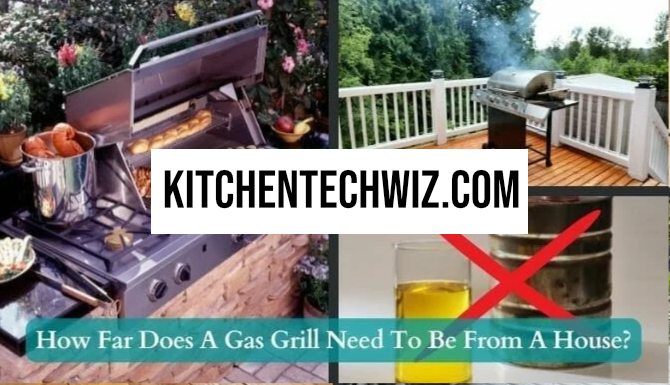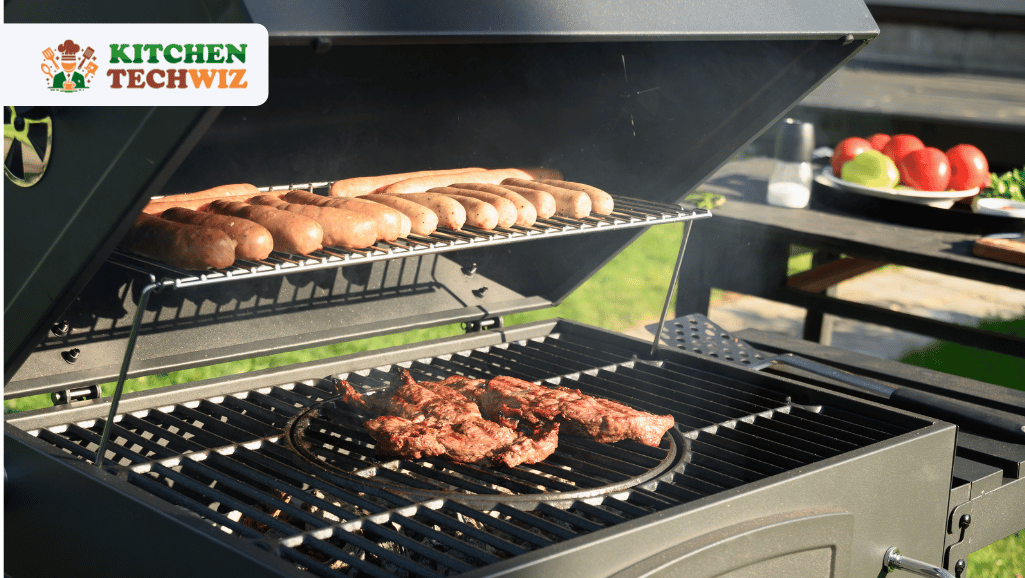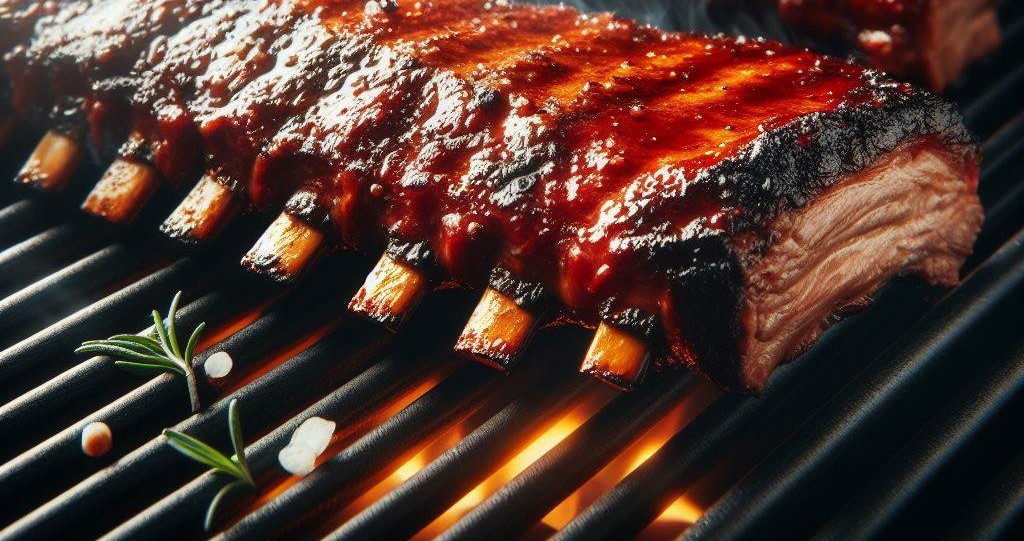Knowing how far your gas grill needs to be from your house is essential. It will ensure that you grill safely and that your food tastes great.
Most gas grills must be at least 3 feet away from any flammable surface, including houses. Most experts recommend keeping a gas grill at least 10 feet away from home. But again, it depends on the size and type of grill and whether or not it’s windy outside.
However, it’s always best to check your grill’s manufacturer’s guidance before using it. Some grills may need to be placed further away from a house to be used safely.
Many factors come into play when deciding how far away from the house the grill should be.
- The first factor is the size of the grill. You can place a small grill closer to the home than a large one.
- Another factor is the type of gas used. Some grills use propane, which is more volatile than natural gas.
- It would be best if you considered the wind. If it’s windy, the grill should be placed further away from the house so that flames don’t get blown toward it.
- It is also an essential & final factor to make sure that the area around the grill is clear of any flammable materials. It includes things like leaves, paper, and gasoline.
- Keep the grill clean and grease build-up-free. Grease can easily catch fire and cause severe damage.
Grilling is a great way to cook food and enjoy the outdoors, but it’s essential to be safe. By following these guidelines, you can ensure that your gas grill is being used safely and won’t pose a risk to your home.
Understanding safety regulations for gas grills
When it comes to gas grills, understanding safety regulations is crucial for protecting your home and loved ones. One key regulation to consider is the clearance distance required between a gas grill and any combustible surfaces. This includes not only your house but also fences, trees, and other flammable materials. While there may be slight variations in local codes, a general rule of thumb is to keep the grill at least 10 feet away from any structure or flammable object. Additionally, when positioning the grill, make sure there are no overhanging branches or awnings nearby that could potentially catch fire.
Furthermore, it’s important to regularly inspect and maintain your gas grill to ensure it meets safety standards. This includes checking for gas leaks, keeping the burners clean and unobstructed, and being mindful of any signs of wear or damage that could compromise its safety. By staying informed about these regulations and taking proactive steps to adhere to them, you can enjoy your outdoor cooking experience with peace of mind knowing that you’re prioritizing safety above all else.
Safety Considerations
When it comes to safety considerations for grilling, the distance between a gas grill and a house should be determined by the grill type and size. For smaller gas grills, a general guideline is to keep them at least 3 to 5 feet away from your house or any flammable materials. This distance allows for proper ventilation and reduces the risk of fire hazards.
However, larger gas grills may require even greater distances due to their potential for higher heat output and larger areas of fuel combustion. It’s important to consult the manufacturer’s recommendations and local building codes to determine the appropriate distance required for your specific grill model. Additionally, always consider factors such as wind direction, overhanging structures, and the location of propane tanks when determining the safe distance between your gas grill and your home. By being mindful of these factors, you can ensure that you’re safely enjoying outdoor grilling without putting your home at risk.
Ventilation Needs
Ensuring proper airflow around the grill is crucial for maintaining a safe and effective grilling environment. Insufficient ventilation can lead to a buildup of harmful gases such as carbon monoxide, posing a serious health threat to anyone in the vicinity. Additionally, poor airflow can hinder the performance of the grill, causing inconsistent cooking temperatures and prolonged cooking times.
Furthermore, adequate ventilation is essential for preventing flare-ups and reducing the risk of fire hazards. When air circulates effectively around the grill, it helps disperse excess heat and reduces the likelihood of grease igniting. By prioritizing proper airflow around the grill, enthusiasts can not only enhance safety but also optimize their grilling experience by achieving more consistent results and better-tasting meals.
Fire Hazards
With the warm spring and summer months approaching, many homeowners will be dusting off their gas grills for outdoor cooking. While these appliances provide convenience and delicious meals, it’s crucial to acknowledge the potential fire hazards they present. One significant risk is the possibility of flare-ups, caused by grease or food drippings igniting on the grill’s surface. Without proper precaution, these flare-ups can escalate quickly, especially when in close proximity to combustible materials such as wooden decks or overhanging branches.
Considering the nature of gas grills as open flames devices, understanding their safe placement in relation to a house is essential. The 10-foot rule commonly recommended may not be sufficient; combustible materials like dry leaves or wooden fences could still pose a hazard at this distance. To truly mitigate fire risks, homeowners should adopt an approach that prioritizes both distance from buildings and careful consideration of surrounding vegetation and structures. Emphasizing fire safety procedures alongside safe grill placement can help prevent potentially devastating consequences during outdoor cooking adventures.
Conclusion
Prioritizing safety when using a gas grill is paramount for protecting both yourself and your property. With the potential risks of fires, explosions, and carbon monoxide poisoning, it’s crucial to adhere to manufacturer guidelines and local regulations regarding the placement of a gas grill in relation to your house. Beyond the physical distance requirements, regularly inspecting and maintaining the grill’s components, such as hoses, valves, and connectors is essential for preventing leaks or malfunctions that could result in dangerous incidents.



![16 Best Tabletop Propane Gas Grills 2024: [Also Charcoal & Electric]](https://kitchentechwiz.com/wp-content/uploads/2021/04/Best-Tabletop-Propane-Grill-1.jpg)

Leave a Reply